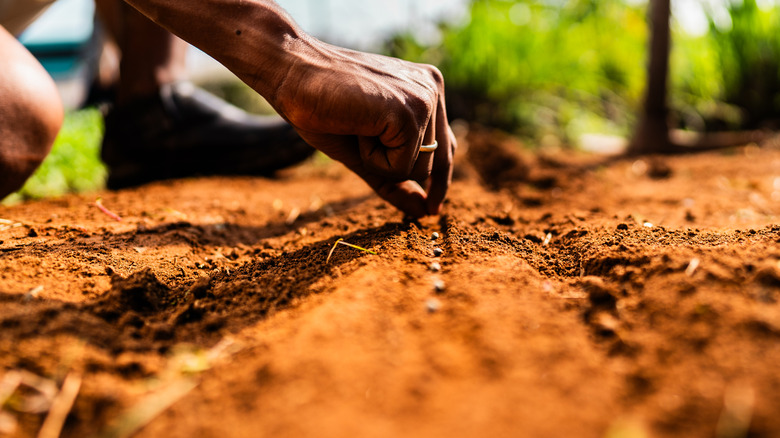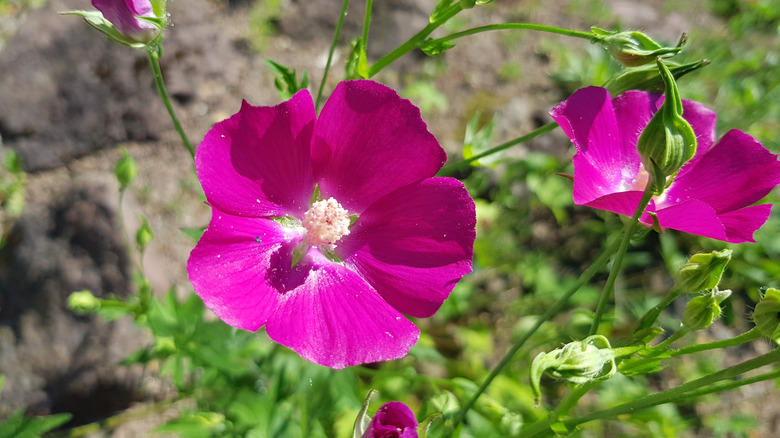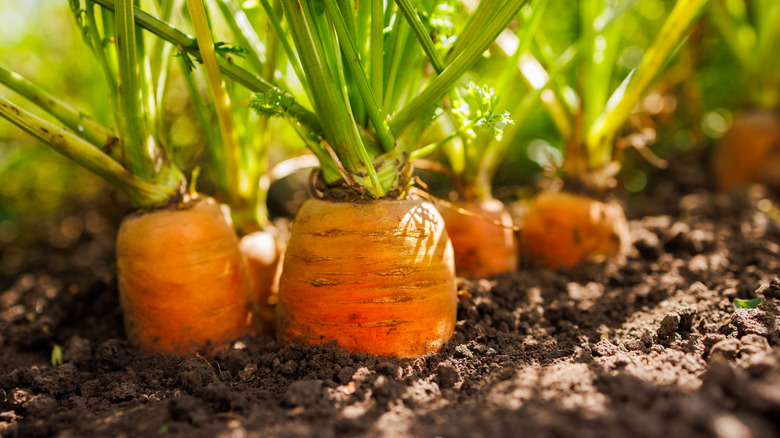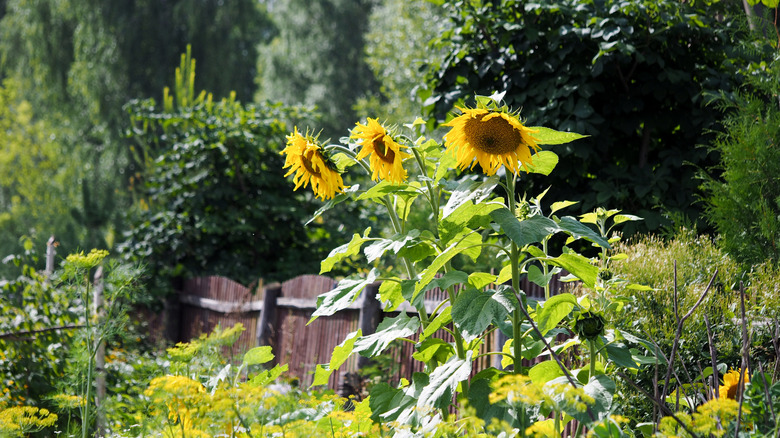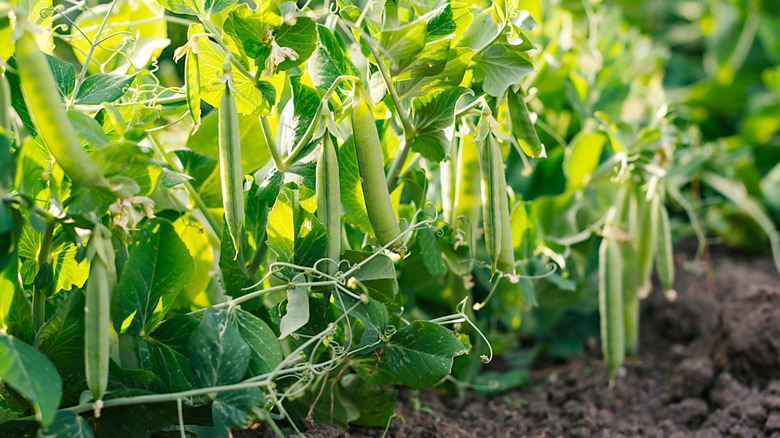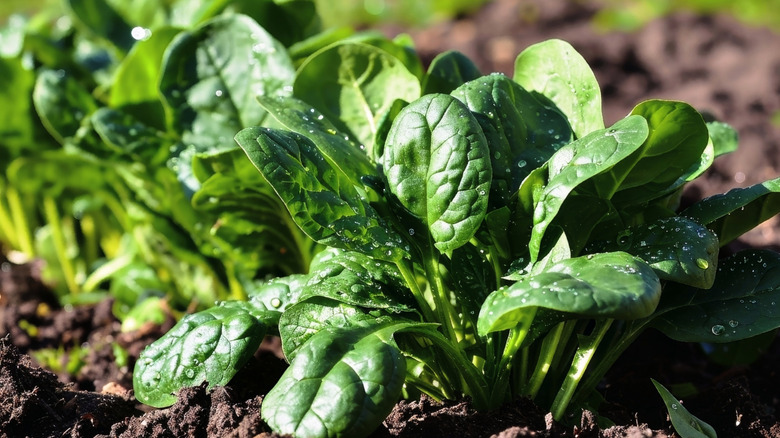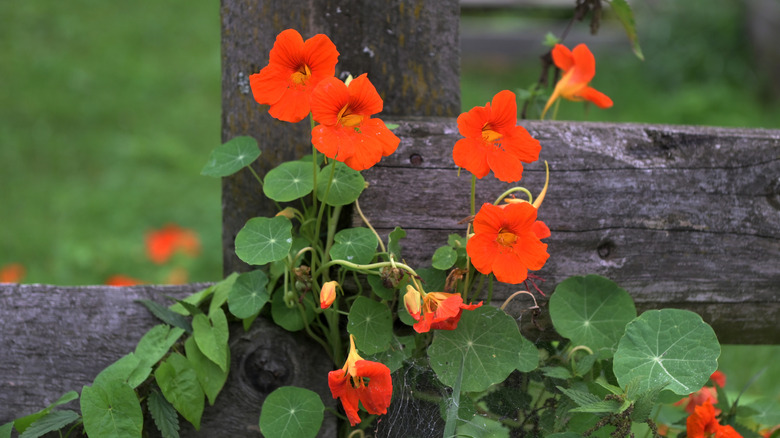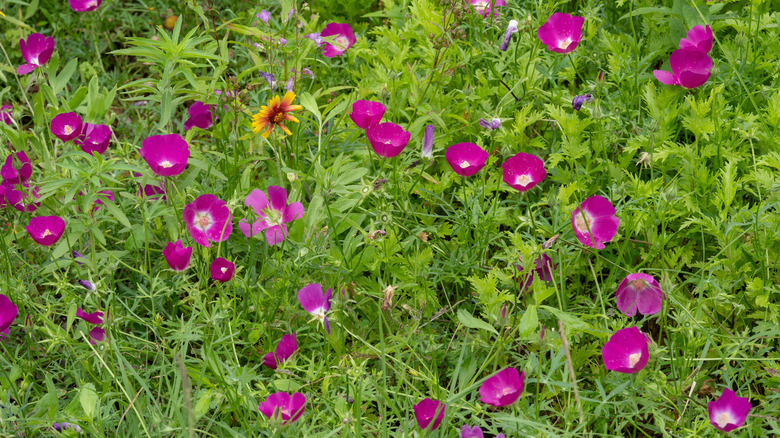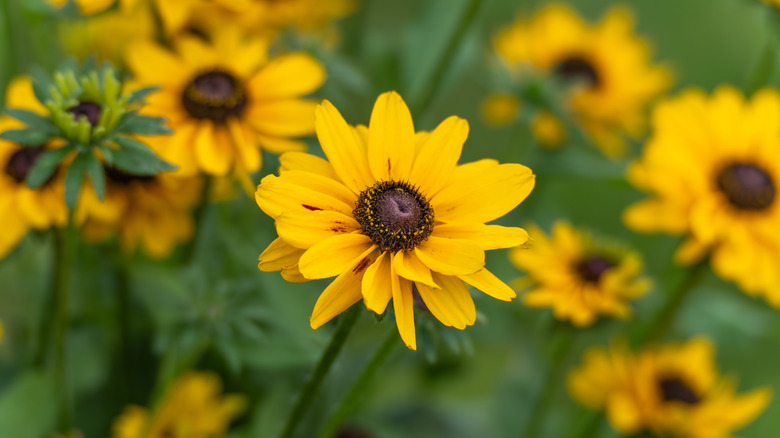13 Garden Plants That Are Easier To Grow From Seeds Vs Seedlings
We may receive a commission on purchases made from links.
When you're planning your garden, it's easy to be tempted by the instant gratification of nursery-grown seedlings. But don't overlook the magic of starting from seed. Not only is it way more budget-friendly, but it unlocks a whole world of variety you just can't find in the limited selection at a garden center. Plus, starting plants from seed gives you complete control over their entire life cycle, from the soil mix to the growing conditions, which often results in healthier, more robust plants with stronger root systems.
But look, we get it. For some gardeners, especially beginners, the struggle of deciding when to use seeds vs. seedlings seems a bit intimidating. What we've found is that some plants and crops will do better when grown from seed. Certain varieties have delicate roots that don't like to be disturbed, while others grow so quickly that buying a seedling just doesn't make sense. Whatever the reason, we've found 13 garden plants that are not only easy to grow from seed but often perform better when sown directly where they are to grow. For each plant, we'll explain why skipping the seedling stage is a good idea and provide some simple tips to help you get growing.
Bush's poppy mallow (Callirhoe bushii)
Bush's poppy mallow (Callirhoe bushii) is a beautiful, low-maintenance, perennial flowering ground cover that produces vibrant, magenta, cup-shaped flowers all summer long. What makes this plant a prime candidate for direct sowing is its impressively long and thick taproot. This taproot is fantastic for helping the plant seek out water and thrive in dry conditions, but it also means that once it's established, it really doesn't like to be moved, and trying to transplant a seedling often leads to a sad, shocked plant.
To successfully grow poppy mallow from seed, you'll need to give the seeds a little help to break their natural dormancy. Their tough outer coating needs to be weakened, which you can do through a process called scarification. An easy way to do this is to gently rub the seeds with sandpaper or soak them in hot — but not boiling — water overnight before planting. Another option is using cold stratification by mixing the seeds with moist sand, placing them in a plastic bag, and refrigerating them for about 30 days. Once the seeds are ready, plant them about ¼ inch deep in a sunny spot with well-drained soil after the last frost, and remember to be patient, as they can really take their time to sprout.
Nearly all types of beans
Whether you're growing bush beans or pole beans, these warm-season veggies are a garden classic for a reason since they're incredibly productive and easy to grow. Beans are a prime example of a plant that just doesn't benefit from being transplanted. They have fragile root systems that are easily damaged during the transplanting process, which can lead to shock. Even if the seedlings survive, growing beans from seed is just better as seedlings are often weaker and produce a smaller harvest than their direct-sown counterparts.
For a bountiful bean harvest, it's best to sow the seeds directly into the garden after all danger of frost has passed and the soil has warmed up to at least 60 degrees Fahrenheit. Plant the seeds about 1 inch deep and 4 inches apart in a spot that gets plenty of sun. Beans tend to germinate quickly, so you should see sprouts in about a week. Keep the soil consistently moist, but not waterlogged, until the seedlings are well-established. Don't forget to add a support for pole beans so they can climb, like this 65-inch trellis by Quibbay.
Corn (Zea mays)
There's nothing quite like the taste of fresh, homegrown sweet corn, and thankfully, it's one of the easiest vegetables to grow directly from seed. Corn (Zea mays) is a large-seeded plant that germinates and grows quickly, making the extra step of starting it indoors and transplanting it completely unnecessary. In fact, transplanting can be detrimental to corn, as it can disrupt the root system and stunt the plant's growth.
To successfully grow corn in a garden, it's best to plant the seeds in a block design rather than a single row. Corn is wind-pollinated, so planting in a grid of at least four by four ensures that the pollen from the tassels can easily fall onto the silks of the neighboring stalks. Plant the seeds about 1 to 2 inches deep and 6 inches apart in a sunny, well-drained spot after the last frost. Corn is a heavy feeder, so make sure to enrich your soil with plenty of compost or a balanced fertilizer before planting.
Pumpkin (Cucurbita pepo)
From Halloween jack-o'-lanterns to Thanksgiving pies, pumpkins (Cucurbita pepo) are a fall staple that are surprisingly easy to grow in your own backyard. As another large-seeded plant, pumpkins thrive when sown directly into the garden. Their roots are sensitive and don't like to be disturbed, so starting them indoors and transplanting them can lead to stunted growth or even kill the young plant.
To grow your own pumpkins, wait until the soil is warm — at least 70 degrees Fahrenheit — and all danger of frost has passed. Plant the seeds about one inch deep in small mounds, or "hills," of soil. This helps the soil warm up faster and provides good drainage. Give them plenty of space to sprawl, as the vines can get quite long. For a little boost, you can soak the seeds in warm water for a few hours before planting to help them germinate a bit faster.
Carrots (Daucus carota subsp. sativus)
Crisp, sweet, and packed with nutrients, carrots (Daucus carota subsp. sativus) are a garden favorite that are a must for direct sowing. As a root crop, the edible part of the carrot is its main taproot. If this taproot is disturbed or damaged in any way, which is almost unavoidable during transplanting, it could create forked, stunted, or otherwise misshapen carrots. For those perfectly straight, uniform carrots you see at the store, starting from seed in their permanent spot is non-negotiable.
To grow great carrots, start with loose, well-draining soil that doesn't have any stones or clumps. Carrot seeds are tiny, so mix them with sand before sprinkling them in the row, and plant about ¼ inch deep. Cover them lightly with sifted compost or soil and keep the area consistently moist until they germinate, which can take a couple of weeks. Once the seedlings are a few inches tall, you'll need to thin them to be about three inches apart by snipping the tops with scissors rather than pulling them out to avoid damaging the roots of the carrots you're leaving behind. Sadly, thinning is also another non-negotiable because thinning carrot seedlings reduces the problems that come with overcrowding.
Beets (Beta vulgaris)
Beets (Beta vulgaris) are a root crop like carrots, so do best when sown directly in the garden. The main reason for this is to protect the developing taproot, aka the part you want to eat. Damaging this root during transplanting can lead to stunted or misshapen beets, so starting them off from seed and keeping them parked in place is the most straightforward way to ensure a good harvest.
One thing to know about beets is that each "seed" is actually a small, wrinkled capsule containing several individual seeds, so you'll likely get a small cluster of seedlings from each one you plant. Sow these seed clusters about ½ inch deep in loose, well-draining soil once it can be worked in the spring. Once the seedlings are a few inches tall, you will need to thin them out to give the roots room to grow. To avoid disturbing the roots of the beet you want to keep, snip the extra seedlings at the soil line with scissors instead of pulling them out.
Sunflowers (Helianthus annuus)
Nothing says summer quite like a towering sunflower (Helianthus annuus), and these cheerful giants are a classic for a reason. Sunflowers are another large-seeded plant that grows so quickly and vigorously that there's really little to no advantage in starting a sunflower plant indoors. They also develop a long taproot that can be easily disturbed during transplanting, which can lead to stress and slower growth, so it's best to sow them directly where you want them to bloom.
To create your own sunflower field, wait until the soil has warmed to at least 50 degrees Fahrenheit and all danger of frost has passed. Plant the seeds about 1 to 2 inches deep and 6 inches apart in a spot that receives full sun for most of the day. Sunflowers are not particularly fussy, but they do best in well-draining soil. Keep the soil consistently moist until the seedlings are established, and be prepared to provide support for taller varieties, as their heavy heads can cause them to topple over in strong winds.
Peas (Pisum sativum)
One of the first signs of spring in the garden, sweet, crisp peas are a cool-season delight that are perfect for direct sowing. Peas (Pisum sativum) grow so quickly – germinating in a little over a week, on average – that there's no real benefit to starting them indoors, and their delicate root systems don't appreciate being disturbed. They germinate readily in cool soil, making them an ideal crop to plant as soon as the soil can be worked.
To get a jump on the season, you can sow pea seeds in the garden about 4 to 6 weeks before your last spring frost. Soaking the seeds in water overnight before planting can help speed up germination. Then plant about 1 inch deep and 2 inches apart in well-draining soil. Most pea varieties will need some kind of support to climb on, so be sure to install a trellis or fence at the time of planting to avoid damaging the roots later on.
Leafy greens like lettuce and spinach
For a new or impatient gardener, it's hard to beat leafy greens like lettuce, microgreens, or spinach. These fast-growing, cool-season crops sprout so quickly and are so low-effort that there's little reason to bother with transplanting seedlings. Because the seeds are so tiny, they only need to be planted shallowly, and they germinate readily in cool soil.
You can sow lettuce seeds every 2 to 3 weeks, as long as the weather is cool. Plant the tiny seeds about ⅛ inch deep in well-draining soil, and keep the area consistently moist. Some leafy greens tend to bolt, or go to seed, when the weather gets too hot, so it's best to plant it in the spring and fall. For a continuous supply, consider planting a mix of different varieties that mature at different times.
Nasturtiums (Tropaeolum majus)
Nasturtiums (Tropaeolum majus) are just a delightful, easy-to-grow flower that's perfect gardeners of any skill level. Not only do they have cheerful, brightly colored blooms, but their leaves, flowers, and even seeds are edible with a peppery kick. Nasturtiums grow so quickly and easily from seed — germinating on average anywhere from 7 to 12 days – that buying them as seedlings really isn't worth the effort or the extra cost.
Because nasturtiums don't transplant well, it's best to sow the seeds directly into the garden after the last frost. For a higher germination rate, you can soak the seeds in water for a few hours before planting, then plant them about ½ inch deep and 10 to 12 inches apart in a spot that gets plenty of sun. One of the great things about nasturtiums is that they actually prefer poor soil, as rich, fertile soil will often produce more leaves than flowers.
Winecup (Callirhoe involucrata)
Winecup (Callirhoe involucrata), also known as purple poppy mallow, is a stunning, low-growing native wildflower that produces the most brilliant magenta, cup-shaped flowers from spring through fall in ideal conditions. This drought-tolerant perennial is incredibly easy to grow from seed, but the real reason to direct sow is its massive taproot. Once established, this deep taproot makes the plant incredibly resilient, but it also means that trying to move it is nearly impossible without causing fatal damage.
For a successful patch of winecups, the seeds need a little help to get started. You'll need to both scarify and stratify them. Scarification, or breaking the hard seed coat, can be done by soaking the seeds in hot water for 24 hours. After that, they need a period of cold, moist stratification, which you can do by mixing them with damp sand and refrigerating them for a few weeks. Plant the treated seeds in a sunny spot with well-draining soil, and don't be discouraged if they don't bloom the first year; their beautiful foliage makes a great ground cover while you wait for the flowers to arrive.
Eastern red columbine (Aquilegia canadensis)
Love hummingbirds? Then plant a patch of the native Eastern red columbine (Aquilegia canadensis) because they can't get enough of its intricate red and yellow flowers. Eastern red columbines grow easily from seed but are known to be difficult to transplant due to their rootstocks. The good news is, though, that even after the blooms fade, their soft, lacy foliage adds texture and light ground cover, helping to shade the soil and discourage weeds.
To get these seeds to sprout, you'll need to give them a cold spell. The easiest way is to just sow the seeds outdoors in the fall and let nature do the work over the winter. Or, you can mimic winter by mixing the seeds with some damp sand and sticking them in the fridge for about a month. Since these seeds need light to germinate, just press them lightly into the soil surface in a spot with well-draining soil and some partial shade. They might not give you flowers in the first year, since they're getting settled in the first year, but the lacy-looking foliage should be more than enough to tide you over until year two.
Black-eyed Susan (Rudbeckia hirta)
With their classic golden-yellow petals and dark brown centers, Black-eyed Susans (Rudbeckia hirta) are a cheerful and iconic addition to any sunny garden. While these low-maintenance native beauties are technically short-lived perennials, they're often grown as annuals. They are prolific self-seeders, and they couldn't be easier to grow from seed, so once you have a patch established, you'll likely have them popping up for years to come.
While some sources suggest starting the seeds indoors after a period of cold stratification, many gardeners have great success simply sowing the seeds directly in the garden. Wait until your soil has warmed to about 70 degrees Fahrenheit, then lightly press the seeds into the soil, as they need light to germinate. Keep the soil moist until the seedlings appear, and you'll be rewarded with a summer-long display of sunny yellow blooms that are a favorite of bees and butterflies.
